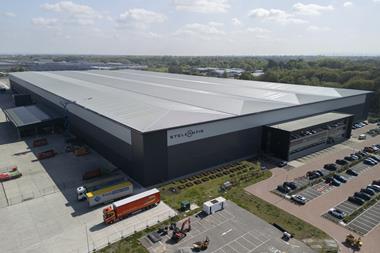
The automotive industry is in the midst of massive change. From ride-sharing services, advances in mechanical innovation and autonomous vehicles, and shifts in fossil fuels and hybrid power, these disruptions are helping to fuel some amazing transformations.
Winning in this environment requires the ability to collaborate, plan and execute with trading partners, and pull together entire communities at a speed that current business processes and enterprise systems simply can’t support.
To achieve this kind of agility, many in the automotive industry are now leveraging digital cloud network platforms to collaborate with partners in real time and drive breakthrough results.
ERP constraintsVehicle design has shifted from incremental mechanical and performance improvements to embedding the latest digital capabilities and providing a seamless user experience. For many, meanwhile, the ultimate vehicle may soon be one you neither drive nor own.
Companies across the automotive value chain are looking at the impact of these changes and are finding that current enterprise resource planning (ERP) systems are huge constraints in an environment that requires business agility and real-time connectivity with partners, consumers and vehicles.
Traditional ERP solutions were designed to be systems of record and function within an organisation, not across multiple enterprises. They were also designed around fixed, predefined processes and are generally incapable of adapting to new requirements. These limitations have led companies to adopt digital cloud networks to keep pace.
The typical automotive supply chain is an extended global network of suppliers, 3PLs, forwarders and carriers. Each company in this chain has their own systems in their own silos. They work off forecasts, schedules and orders communicated by the OEM which are cascaded down to each tier of suppliers.
The limitations with ERP and legacy systems mean that most of these communications are still made in batch via electronic data interchange (EDI) systems or, even worse, by emailed spreadsheets.
It’s not unusual in such models for it to take more than a week before a supplier senses a shift in OEM demand. This is too little and too late to be actionable and often results in a classic bull-whip effect, leading to excess inventory, stockouts, and unnecessarily high shipment levels.
It’s also costly, as it’s not unusual to have hundreds of people spread out globally manually piecing information together from various systems to keep supply and demand in sync with all impacted parties.
Driving a digital advantageCompanies and solution providers are increasingly realising that the flawed architecture of single enterprise-centric solutions cannot be patched up to support today’s highly dynamic and interconnected business environment.
Just as cloud-based social networks have created new approaches to how we manage our personal and business contacts, new network platforms and the resulting communities are changing the way business is conducted.
Historically, enterprise system implementation required a ‘big bang’ approach to deploy that was expensive, time-consuming and risky. Using a technology approach like Uber, Facebook, and LinkedIn, however, businesses are now connecting with their partners in real time and building more collaborative and agile ways of managing their value chain.
These innovative network platforms are designed from the ground up to represent an interconnected community of business partners that work together to satisfy consumer requirements. They involve a sophisticated, permissions-based framework that determines what each organisation sees, who can interact with whom, and in what way.
The network also manages common plans and provides a transaction backbone that all network members share, alongside enterprise services for each member that seamlessly connect to their business partners.
Network cloud solutions are designed to operate as a System of Engagement (SoE) rather than a System of Record (SoR), like older ERP software. Unlike the typical ERP model, exchanging information with partners in an SoE is not an add-on but a core part of the platform. It’s like the difference between social networking on LinkedIn and a standalone contact management application on your smartphone.
Many companies begin their transformation by putting a digital network in place and deploying an overlay control tower solution. Once supply chain partners are connected to the network, each one can easily publish schedules, capacity, status updates, and so on, and all parties can subscribe to receive the necessary information rather than build one-to-one interfaces with every partner.
This results in significant cost and time savings: eliminating information delays and leveraging a single version of events, while providing real time visibility to all, can pay huge dividends.
The automotive industry currently runs an average inventory of 56 days for OEMs and 38 days for top suppliers. By updating the automotive value chain, businesses can cut this by 15-30% while maintaining continuity of supply and slashing logistics costs.
By deploying a digital operating network connecting OEMs, tier suppliers, distributors and logistics service providers, forward-thinking companies are already reaping dividends from the digital revolution.
One good example is a top-five OEM now enjoying savings estimated in the tens of millions of dollars a year, after implementing a fully integrated parts-level transport network for customer care operations. It achieved end-to-end connectivity with thousands of trading partners in less than six months, leveraging the network to create a freight bill audit capability that enabled it to audit 100% of freight bills at a shipment level and achieve a 90%-plus auto-match rate with contracted terms.
Another good example is tier supplier Dana, which was able to identify a potential 40% inventory reduction on specific products by using such a network to manage the inbound supply for its commercial vehicle operations as well as its intercontinental freight operations, and give it quick access to inventory data at third-party warehouse facilities.
Deciding your routeWhen mapping out a switch to such a network, companies have a choice between a ‘dual platform’ and ‘replacement’ strategy.
If an organisation is locked into an existing ERP system and needs to preserve its investment, then a dual platform strategy that embraces legacy systems is often best, and involves an overlay of services from the network to orchestrate business processes between functions and companies. Otherwise, a straight replacement strategy may be appropriate, in which you deploy the new platform as an alternative to the legacy system.
Regardless of the approach, however, cloud network platforms can be deployed in months, not years. They are both modular and designed to be continuously upgraded.
Visionary companies are already adopting digital cloud networks to drive breakthrough results and power their own digital transformation.
The choice is clear: if you want to delight customers and increase both profits and efficiency, you need to change lanes, accelerate and disrupt – or run the risk of being left behind.


































